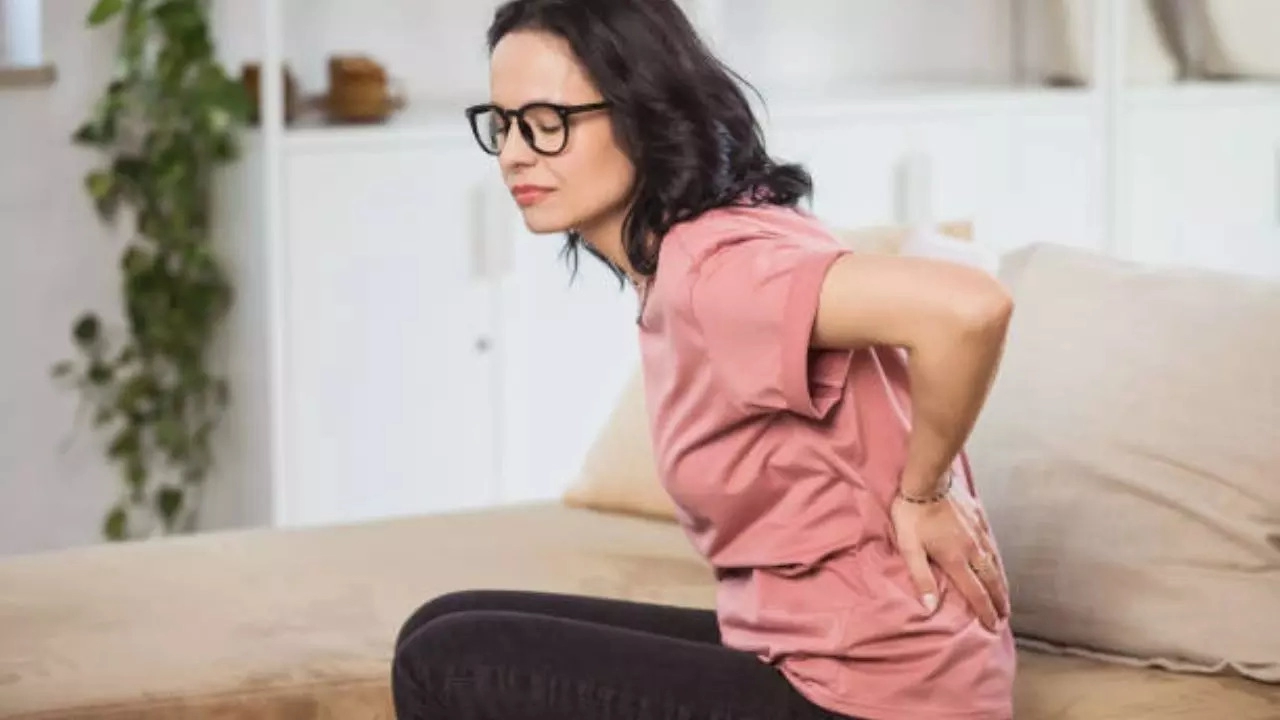Pallavi Mehra • 23 Jul 2024
Bone Health During Menopause: Expert Shares Tips To Combat Osteoporosis

Bone Health During Menopause: Expert Shares Tips To Combat Osteoporosis (Image Credits: iStock)
Menopause, which usually occurs in the late 40s or early 50s, is a natural biological process that signifies the end of a woman's reproductive years. The increased risk of osteoporosis during menopause is a major health concern. This disorder is marked by weakening bones and an increased risk of fractures. It is impacted by a decrease in estrogen levels, a hormone that is essential for preserving bone density. It is essential to maintain bone health and general quality of life after menopause, but how to do it? We got in touch with a health expert who shares tips to combat osteoporosis.
Dr Akhilesh Yadav, Associate Director- Orthopaedics and Joint Replacement, Max Hospital Vaishali explains when bones have osteoporosis, they become porous, brittle, and more prone to breaking. When bone resorption (breakdown) surpasses bone production, it occurs. Bone loss is accelerated after menopause due to the lack of estrogen, which is essential for maintaining bone density. The five to seven years after menopause are crucial for interventions related to bone health because during this time, women can lose up to 20 per cent of their bone density.
Strategies To Combat Osteoporosis After Menopause
Dr Akhilesh Yadav shares several strategies to combat osteoporosis after menopause. These include:
1. Frequent Exercise with Weights
Being physically active on a regular basis is essential for preserving bone density and general health. Weight-bearing activities that increase bone density and decrease bone loss include jogging, dancing, walking, and climbing stairs. Exercises that increase muscular strength and balance, such as lifting weights or utilizing resistance bands, are especially helpful since they lower the chance of fractures and falls.
2. A Nutritious diet
In addition to supporting general health, a balanced diet full of fruits, vegetables, lean meats, and whole grains provide vital elements for strong bones. You may get magnesium, potassium, and vitamin K in a variety of fruits, vegetables, nuts, and seeds. All three are essential for healthy bones. Because these substances can disrupt the metabolism of bones and the absorption of calcium, limiting your intake of alcohol, coffee, and salt can help prevent bone loss.
3. Dosage of Calcium and Vitamin D
Making sure you are getting enough calcium both during and after menopause is important for the health of your bones. Aim for a daily calcium intake of at least 1,200 mg for women over 50. Dairy products, leafy green vegetables, and fortified foods are good dietary sources. Bone health and the absorption of calcium depend on vitamin D. Although sun exposure aids in the body's production of vitamin D, many people do not receive enough of it from sunshine alone. Aiming for 600–800 IU of vitamin D per day, women over 50 can get their recommended amount via fortified foods, fatty fish, and supplements if needed.
4. Therapy for Hormone Replacement (HRT)
For some women, hormone replacement therapy (HRT) can be a useful tool in easing menopause symptoms and slowing down bone loss. Estrogen is restored by HRT, preserving bone density. It is not appropriate for everyone, though, and there could be hazards involved, such as a higher chance of developing certain malignancies and cardiovascular conditions. To ascertain whether HRT is a good option,
5. Changes in Lifestyle
Changes in lifestyle can have a major effect on bone health. Giving up smoking and reducing alcohol intake are important first steps because they both increase the loss of bone. It's crucial to maintain a healthy weight since obesity can lead to various health problems that indirectly affect bone health, while underweight raises the chance of bone fractures.
6. Testing Bone Density Frequently
For women with osteoporosis risk factors, routine bone density testing (DEXA scans) are advised beginning at age 65 or earlier. By identifying osteoporosis early on and monitoring bone health, these tests enable prompt intervention and treatment.